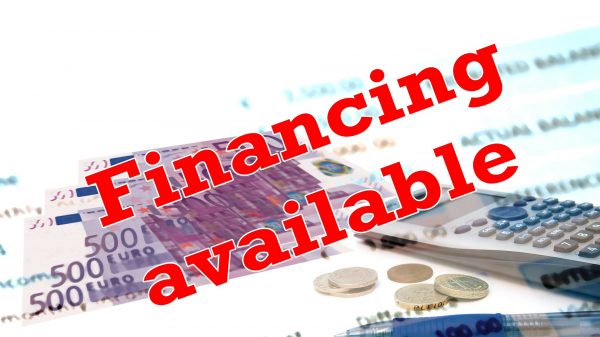Credit cards have become a must-have in our everyday life. Their usage has increased continually since they were first introduced. You probably have at least one in your wallet, or you are planning to apply for one. Numerous reasons support the need for a credit card. Thus, you should understand how credit cards work. Although they are useful financial products you should have, they could jeopardize your financial health if not used properly. You could end up with a pile of debt and worsen finances. Thus, knowing how credit cards work could help you better manage your debt.
What is a credit card?
A credit card is a product offered by banks and other financial institutions. A credit card can be viewed as a line of credit (revolving credit) or a short-term loan. You are basically borrowing money every time you use a credit card to make a purchase (there are other ways to use it as well). The approved line of credit is the maximum amount of funds you can use as you desire. Thus, credit cards provide an easy way to borrow money for a short period. In its physical form, a credit card is a plastic card. You can use your credit card to pay for different goods or services or withdraw cash from ATM. Keep in mind that you have an obligation to make the minimum payment on your balance defined by the issuer when using your credit card.
Difference between a credit card and a debit card
Before explaining how credit cards work, there is a need to briefly explain the difference between credit and debit cards. Because they are physically the same, some people confuse one with the other. From the aforementioned, it is obvious that a credit card is a form of a loan. Every time you use your credit card to pay for something or make a cash advance at the ATM, you are basically borrowing money. You are obliged to repay this money at a later date, in accordance with the credit card agreement. Of course, you could be charged interest for the balance used.
On the other hand, debit cards can be used in the same manner as credit cards, but the difference is that you do not have the repayment obligation. This is so because debit cards are using the funds available on your checking account or savings account. Thus, you can spend as much as you have on your accounts in the very basic form of debit card. The debit card offers you direct access to your checking account. Whereas, with different types of credit cards, you take a form of loan from the credit card issuer. In some cases, you could be approved an overdraft on your debit card.
How do credit cards work?
After defining what credit cards are and the difference between credit and debit cards, what comes next is seeing how credit cards work. There are some basic features of credit cards you should be familiar with. These are:
- A credit card is a form of a loan.
- The credit card issuer will charge you interest on the outstanding balance. Thus, you are paying interest on the money used.
- You have the obligation, and you should pay the minimum repayment amount each month. Failure to do so will result in paying penalty APR.
As mentioned earlier, the funds available on your credit cards can be considered a form of a loan. Thus, whenever you use your credit card, you are borrowing money from the credit card issuer. This means that you should pay back the outstanding balance within the next month or during a couple of months or years (depending on the terms and conditions). If you choose not to repay the full amount owed (balance) within a month (within the grace period, to be more precise), you will be charged an interest rate. This interest is added to your account, and you are obliged to pay it.
When trying to understand how credit cards work, you should also know what credit limit is and how a credit card is approved.
Credit limit – represent the maximum amount you have available on your credit card. Stated differently, it represents the maximum amount of funds, i.e., the credit limit you can use (borrow) with your credit card. The maximum credit limit is determined by the bank based on your credit card application.
For a credit card to be approved, the bank is evaluating your current employment position and past employment. In addition, you are evaluated on the basis of your income, your credit report, and your credit history. From the aforementioned, you should realize that your ability to service a credit card is analyzed. So, in general, the process for getting a credit card is as follows:
- Go through the numerous credit card offers.
- Decide on the most appropriate credit card for you.
- Read the credit cards terms and conditions.
- Read the terms and conditions once more (to make sure that you didn’t miss anything.
- Fill out the credit card application.
- A credit card issuer will evaluate your ability to make payments on your credit card.
- The evaluation is based on your credit history, bill-paying history, current outstanding debt, your monthly income, and your overall financial health.
- The credit card issuer decides whether or not to approve a credit card.
- If you are approved, you sign any additional documents, and voila, you are the owner of a credit card.
You need to understand the process to avoid any uncomfortable situation, just because you didn’t bother enough to understand how credit cards work. While the aforesaid describes the process of getting a credit card, you should also know what to do with your credit card after approval.
Because you can use your credit cards in multiple ways, you should know your obligations for using them. Firstly, let’s consider the different ways you could use your credit cards. You can use them for:
- Purchases – pay for your everyday purchases.
- Balance transfers – transferring your balance from an old credit card to a new credit card with a lower APR.
- Cash advances – where you can withdraw money from an ATM.
So after using your credit card in some of the ways listed above, you now have an obligation each month. You should keep track of the items and purchases you have made during the month. This will ensure that you do not have any late payments and get hit with a penalty. You can see all of your items for the past month in the monthly statement. Monthly statement – is recording your activity with your credit card. The monthly statement is sent by the credit card issuer. This report is sent monthly, and it shows all items, i.e., activities for the previous month. Aside from the details about each amount spent, you can also see details about the interest charge added to your balance (as well as other charges). Moreover, you can see the minimum amount due and the date it will be due. You can also see the billing cycle and plan accordingly to benefit from the grace period.
Although credit cards are not a complicated financial product, you need to understand how credit cards work. This can ensure that you are using your credit card in the best possible manner. First, make sure you understand the specific credit card-related terminology. Second, get familiar with the approval process. The most important thing where many people have made a mistake is the post-approval period. The post-approval period is the one where you actually use your credit card. Always have adequate information before making any finance-related decision.







